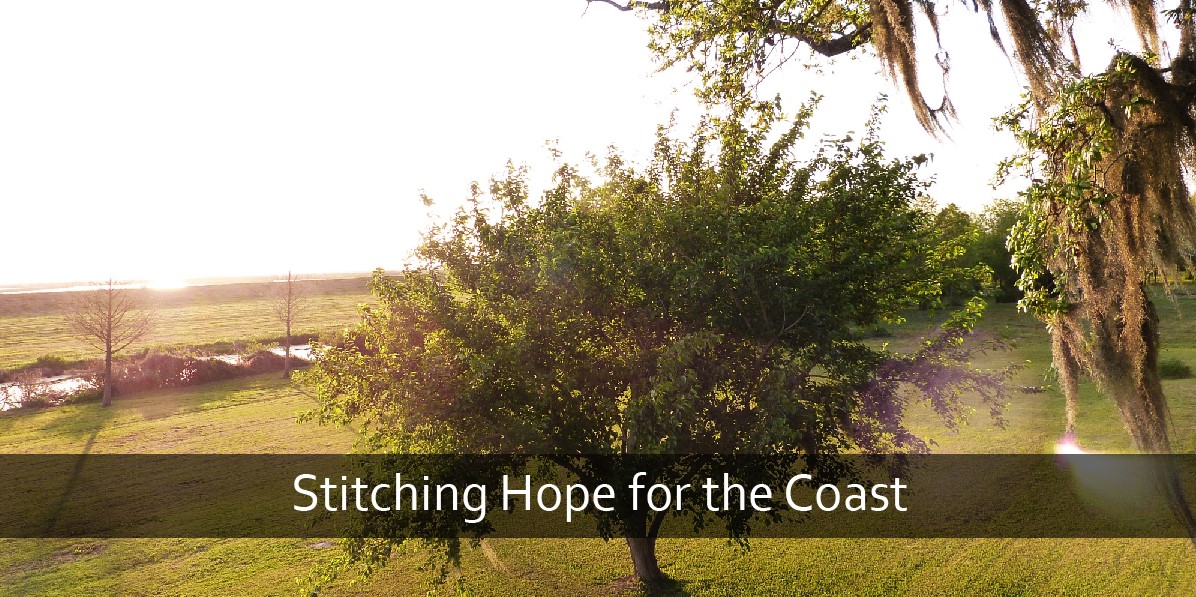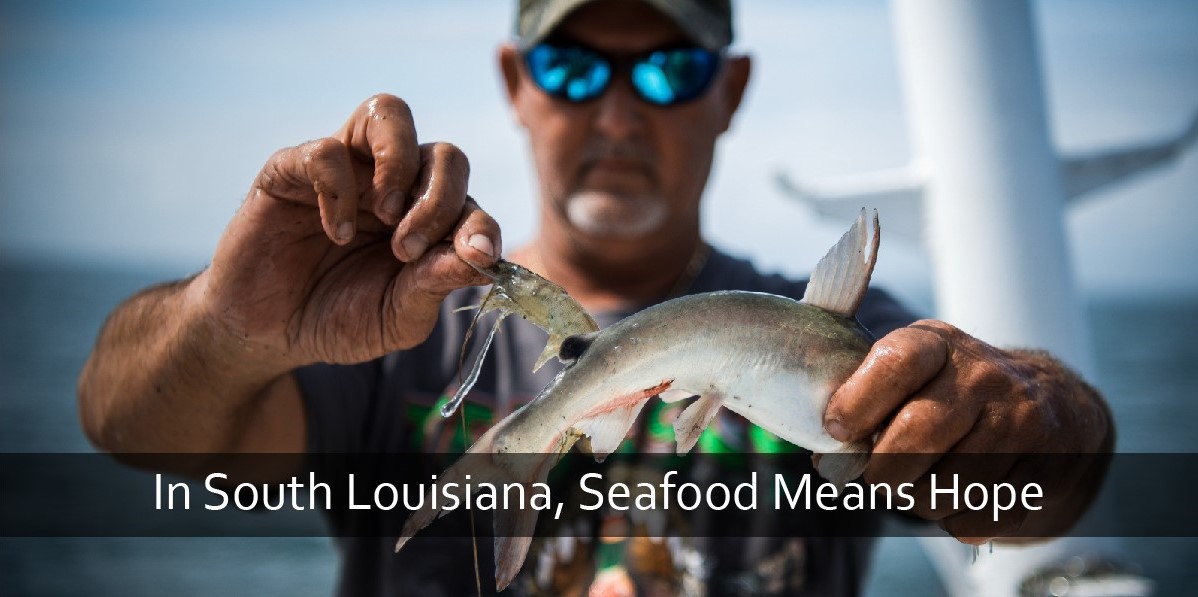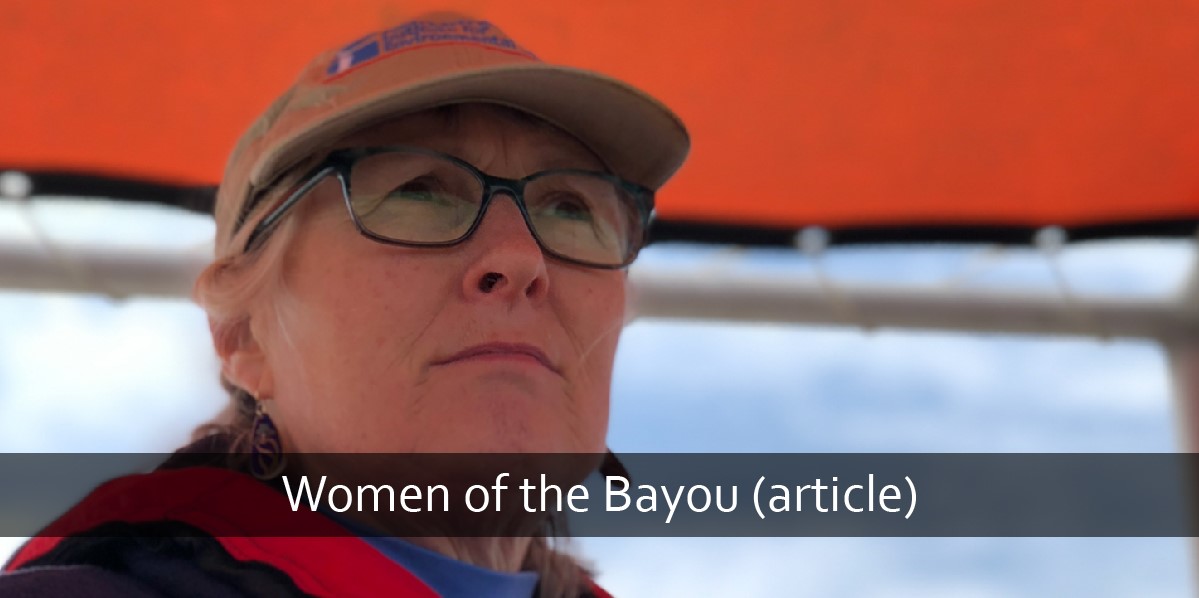OCEANDOTCOMM
OCEANDOTCOMM 2018
In 2018, thirty-seven science storytellers participated in OCEANDOTCOMM 2018, held at LUMCON’s facility in Cocodrie, LA from March 15 – 20. The theme for OCEANDOTCOMM 2018 was ‘coastal optimism’. Many stories about South Louisiana have focused on what is being lost with coastal change. But South Louisiana residents are resilient and many solutions have been proposed to alleviate Louisiana’s coastal problems. Those stories–of response, of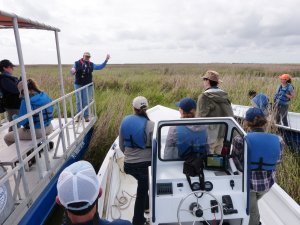 success, of hope–are told much less often.
success, of hope–are told much less often.
DOTCOMM events are product-driven meetings for doing science communication, like a storytelling sprint. Participants don’t give a talk or lead a workshop; instead they are tasked with using the hosting institution’s resources to find and tell a story related to the theme of the event. All stories are expected to be made freely available to the public. The kaleidoscope of perspectives created around the event’s theme provides an immersive experience, which allows audiences to interact with the theme of the event in a way that isn’t otherwise possible.
LUMCON rethought everything from event invitations to the event agenda in order to create an environment of science communication innovation at OCEANDOTCOMM. For example, the coastal optimism theme was not revealed until participants arrived on-site. This mystery reveal ensured that participants approached the theme and their creations with as few preconceptions as possible, getting to know the theme from experts during the event rather than forming opinions before arrival based on what had already been published. This element of surprise also encouraged participants to get involved with projects and media that they do not normally work with. It was a controlled, structured disruption that prevented participants from planning their project and contributions ahead of time.
OUTCOMES
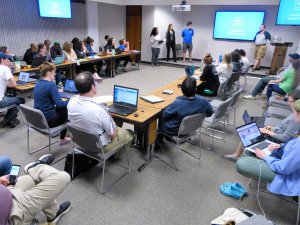 During their four full days in Cocodrie, the thirty-seven OCEANDOTCOMM 2018 participants began work on twenty-nine projects including blog posts, videos, an interactive infographic, radio pieces, crochet, paintings, interactive 360 images, and a break-in box (the opposite of an escape room). At the conclusion of the event, seven projects were ready to share digitally. Two months after the event’s conclusion, fifteen projects were completed or launched and another twenty-two were still in production (click here to see all publications to date). For example, one team created an interactive infographic that illustrates connections between Louisiana coast and Gulf of Mexico ecosystems, showing data from fifteen focal species. While the infographic was originally housed on a data-sharing website, the authors worked with editors at American Scientist to publish an article on those ecosystems and featuring the infographic.
During their four full days in Cocodrie, the thirty-seven OCEANDOTCOMM 2018 participants began work on twenty-nine projects including blog posts, videos, an interactive infographic, radio pieces, crochet, paintings, interactive 360 images, and a break-in box (the opposite of an escape room). At the conclusion of the event, seven projects were ready to share digitally. Two months after the event’s conclusion, fifteen projects were completed or launched and another twenty-two were still in production (click here to see all publications to date). For example, one team created an interactive infographic that illustrates connections between Louisiana coast and Gulf of Mexico ecosystems, showing data from fifteen focal species. While the infographic was originally housed on a data-sharing website, the authors worked with editors at American Scientist to publish an article on those ecosystems and featuring the infographic.
While analysis of completed products is ongoing, eight of those pieces have collectively been seen almost 200,000 times and have engagement rates at or above industry averages.
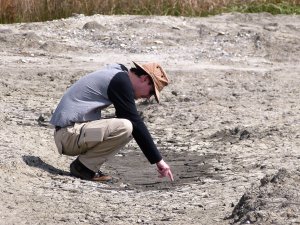 Projects feature and amplify the voices of sixteen Louisianans and OCEANDOTCOMM was well-received by locals. One Baton Rouge resident commented: “It is so easy for people who have never been here or know nothing of this culture to say ‘why don’t they move,’ ‘why would anyone live in that environment?’ Because it is Home, it is not just camps and a place to fish, but a place where people live, work, and supply us with some of the best seafood in the world. Thanks to all of you for your interest in our culture and the livelihood of those that depend on our coastal region to survive.”
Projects feature and amplify the voices of sixteen Louisianans and OCEANDOTCOMM was well-received by locals. One Baton Rouge resident commented: “It is so easy for people who have never been here or know nothing of this culture to say ‘why don’t they move,’ ‘why would anyone live in that environment?’ Because it is Home, it is not just camps and a place to fish, but a place where people live, work, and supply us with some of the best seafood in the world. Thanks to all of you for your interest in our culture and the livelihood of those that depend on our coastal region to survive.”
The impact of the event was not limited to South Louisiana. Multiple people brought some element of OCEANDOTCOMM 2018 home with them to share with their community. One participant is researching local science-based supernatural legends to create a local art installation; another shared her experience with her students, which changed their perception of how scientists do fieldwork and research; and a third is planning to implement a new type of lesson (learned at OCEANDOTCOMM 2018) in her classroom. In addition, OCEANDOTCOMM participants naturally exchanged knowledge and resources throughout the event, sharing tips, tricks, favored resources, and discussing communication techniques. Discussions ranged from how to make a blog more visually appealing to how to find financial support for an underprivileged student to attend a marine education program.
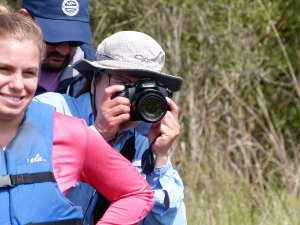 One lasting impact of OCEANDOTCOMM was the creation of a new community within science communication. Before OCEANDOTCOMM 2018 concluded, participants were discussing future collaborations with each other, sharing information on funding and job opportunities, and making plans to meet in person again.
One lasting impact of OCEANDOTCOMM was the creation of a new community within science communication. Before OCEANDOTCOMM 2018 concluded, participants were discussing future collaborations with each other, sharing information on funding and job opportunities, and making plans to meet in person again.
Many OCEANDOTCOMM 2018 participants said that the event’s format was their favorite element of OCEANDOTCOMM, describing the product-driven theme as “challenging and intense” and “extremely valuable in that it changed how we expect conferences to work”. This challenge and the diversity of participants led participants to “get out of [their] own head[s]” and “learn new ways to approach SciComm”. All participants agreed that OCEANDOTCOMM is different than other science communication conferences they’ve attended and 86% of OCEANDOTCOMM participants strongly agreed that the event promoted innovation within science communication online.
The combination of buy-in from experts including local scientists, politicians, and communities; inviting a group of dedicated and passionate science communicators as participants; and LUMCON’s complete investment in the event led OCEANDOTCOMM 2018 to be productive and impactful. The event would not have been possible without the support of these organizations: PeerJ, Sigma Xi, Louisiana Sea Grant, Chauvin Brothers, and American Marine.
Contact our Science Media Officer to be notified of future opportunities or to inquire about hosting a DOTCOMM event.
FEATURED PRODUCTS
Click here to see all OCEANDOTCOMM 2018 products completed to date.

